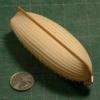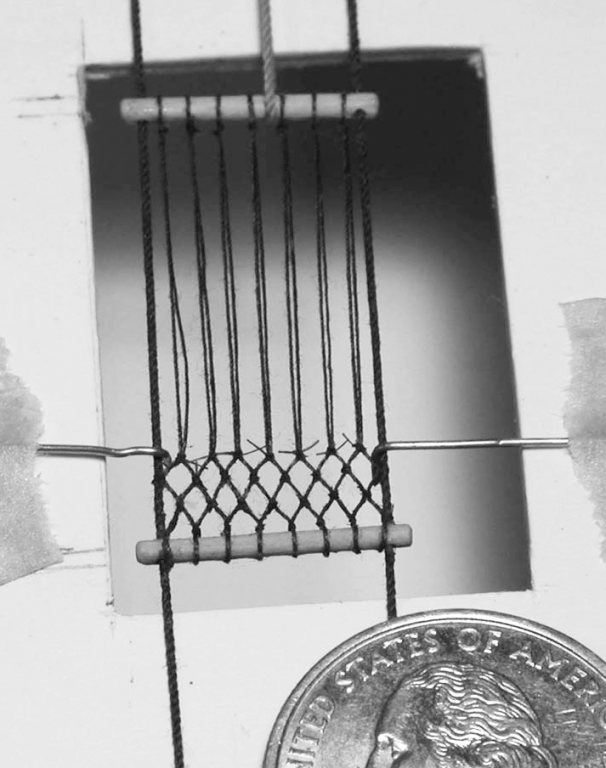-
Posts
13,290 -
Joined
-
Last visited
Content Type
Profiles
Forums
Gallery
Events
Everything posted by druxey
-
A thin coat of gesso first will seal the surface so that the paint coats aren't absorbed. (Regular household acrylic primer will do!)
-
That is Continental Danish practice, Michael. Different countries had different building styles, so that although there are similarities, some details would not apply to British ships.
-
Brush painting is not necessarily bad. Think of old-time coachpainters and the 'coachpainter's finish'. This was achieved with time and patience. A coat of paint, Dry for a minimum of 24 hours, rub down, repeat. It could take 10 coats or more, the last few being rubbed down with pumice powder, then finally with rottenstone. Been there, done it, on a harpsichord case. The results can be amazing if you take sufficient time and care. Or, you could just take the hull to your local autobody shop....
-
Glad you have the courage to revise this, Doris. Dobri!
- 1,035 replies
-
- royal katherine
- ship of the line
-
(and 1 more)
Tagged with:
-

Pandora by marsalv - FINISHED - 1:52
druxey replied to marsalv's topic in - Build logs for subjects built 1751 - 1800
A small but irritating point: I made the same error on a model some years ago. The netting for stowing the sail is incomplete. The illustration we referred to only shows the first stage of creating the netting, the zig-zag part. A more experienced modeler pointed this out to me. The second stage is to tie alternating pairs of those longitudinal threads together (I used fine fly-tying line) to form diamond-shaped netting. It was fiddly and tedious work, best done on a jig off-model. But perhaps you didn't want to know this! However, you are doing such a lovely job on your rigging I thought I'd mention it. -

HMCSS Victoria 1855 by BANYAN - 1:72
druxey replied to BANYAN's topic in - Build logs for subjects built 1851 - 1900
How come I missed this until now? You are doing a lovely job on her, Pat. I'll enjoy continuing to follow your progress.- 1,000 replies
-
- gun dispatch vessel
- victoria
-
(and 2 more)
Tagged with:
-
The illustration form Falconer you posted is correct. The rails are over the planking. Steel (1805) stated that the rails were raised (cut directly) from plank in merchant ships, but not on naval ones.
-
You obviously have had much too much fun, Dan. Now, back to Michaelangelo! Seriously, the populated model looks great. Well done.
- 287 replies
-
- michelangelo
- ocean liner
-
(and 1 more)
Tagged with:
-
I do not know why for certain, but imagine that a naval ship could more easily be repaired if the rails were not part of the planking. Merchant ships were not usually involved in fleet actions! The model photos show the rail directly on the frame only because the model-maker wanted to show it while leaving off planking to show the frames as well. I hope this clears up any confusion.
-
UPDATE: The Hayling book is on its way now. Here is a sneak preview of the cover: For anyone interested, the original model featured here is still for sale. It has now been professionally appraised and the asking price adjusted accordingly. Terms are available. If seriously interested please PM me for further details.
-
A poor excuse for neglecting Michaelangelo, Dan! Seriously, that is from the sublime to the ridiculous in terms of size and scale. At least you didn't have to clean off a 1/16" layer of sticky barn deposits as I just did from a model - a real hazmat situation! You have an interesting mix of sophisticated and primitive work on the Z. Pike model. Was it all made by the same hand?
- 287 replies
-
- michelangelo
- ocean liner
-
(and 1 more)
Tagged with:
-
Shellac itself is not a problem, Mark. It is the solvent required to dissolve it for application. This is usually methyl hydrate; volatile, flammable, and toxic to the central nervous system. 'Nuffsaid.
-
More and more impressive, Doris!
- 1,035 replies
-
- royal katherine
- ship of the line
-
(and 1 more)
Tagged with:
-

Mast Lengths and their above deck heights for HMB Endeavour
druxey replied to dashi's topic in Masting, rigging and sails
Point well taken, Williamo.- 63 replies
-
- HMB Endeavour mast lengths
- above deck mast heights
- (and 3 more)
-
Whoever carved Queen Anne gave her an orb the size of a football! No wonder she doesn't look happy.
- 74 replies
-
- queen anne barge
- Syren Ship Model Company
-
(and 1 more)
Tagged with:
-
I'm sure shellac would work, but why use nasty flammable solvent-based products if it's not necessary?
-

Mast Lengths and their above deck heights for HMB Endeavour
druxey replied to dashi's topic in Masting, rigging and sails
Stepping on the lower deck of the mizen mast appears to have started very late in the 18th century: perhaps not as early as 1770. Looking at contemporary draughts of Endeavour, (online at RMG Collections) although the mast steps are omitted in the profile drawings, the distance apart of the lower deck beams aft suggest that the mizen step is on the keelson, not the lower deck. Looking at the replica Endeavour may not be helpful (unless you are building a model of it!), as many modifications were made to meet modern safety standards.- 63 replies
-
- HMB Endeavour mast lengths
- above deck mast heights
- (and 3 more)
About us
Modelshipworld - Advancing Ship Modeling through Research
SSL Secured
Your security is important for us so this Website is SSL-Secured
NRG Mailing Address
Nautical Research Guild
237 South Lincoln Street
Westmont IL, 60559-1917
Model Ship World ® and the MSW logo are Registered Trademarks, and belong to the Nautical Research Guild (United States Patent and Trademark Office: No. 6,929,264 & No. 6,929,274, registered Dec. 20, 2022)
Helpful Links
About the NRG
If you enjoy building ship models that are historically accurate as well as beautiful, then The Nautical Research Guild (NRG) is just right for you.
The Guild is a non-profit educational organization whose mission is to “Advance Ship Modeling Through Research”. We provide support to our members in their efforts to raise the quality of their model ships.
The Nautical Research Guild has published our world-renowned quarterly magazine, The Nautical Research Journal, since 1955. The pages of the Journal are full of articles by accomplished ship modelers who show you how they create those exquisite details on their models, and by maritime historians who show you the correct details to build. The Journal is available in both print and digital editions. Go to the NRG web site (www.thenrg.org) to download a complimentary digital copy of the Journal. The NRG also publishes plan sets, books and compilations of back issues of the Journal and the former Ships in Scale and Model Ship Builder magazines.




